
Nick MacKinnon is a freelance teacher of Maths, English and Medieval History, and lives above Haworth, in the last inhabited house before Top Withens = Wuthering Heights. In 1992 he founded the successful Campaign to Save Radio 4 Long Wave while in plaster following a rock-climbing accident on Skye. His poem ‘The metric system’ won the 2013 Forward Prize. His topical verse and satire appears in the Spectator, and his puzzles and problems in the Sunday Times and American Mathematical Monthly. Email: nipmackinnon@gmail.com
Turbine 17: Jackson’s Ridge SD 95151 36002///sheets.standards.knots

18 September 2024 By teatime, Muttley will be in trouble, for he will have given away both his 240 MW and 170 MW fallback positions, and he doesn’t want us to talk about one of them. We will also have a remarkable insight into muddle at Calderdale Wind Farm Ltd. Can this muddled company be allowed to monkey about on such dangerous ground as Walshaw Moor? Today we shall also get first inklings of the location and size of Muttley’s 150 MW battery storage, which is the size of one serving the 8.1 GW Dogger Bank wind farms. Muttley wants to build one of the largest battery storage systems in Europe at Shackleton above Hebden Bridge but only yesterday he didn’t know the voltage of the National Grid.
The marvellous weather holds so I push on with the fourth site visit in a week. Today is T17, at the north of CWF and I hope to understand the whole project better by walking the boundary here, which takes a dive into Bofts Hole rather than following the watershed to the apex and angling across Stanbury Bog. I start at Ponden Reservoir and head steeply up through the hamlet, past Ponden Hall, and the museum of farm machinery. Beyond the gate is Bannister Country, though we won’t be in CWF until the site of T17 Jackson’s Ridge.
The track’s blue surface is a mystery until I get home and consult the British Geological Survey. What it isn’t is the brown onsite sandstone, which is crucially too weak and porous to serve as a roadstone even for the limited light traffic on this road up to the Crow Hill butts. Mr Bannister doesn’t use the useless aggregate that Muttley says he will quarry from onsite borrow pits for roads and turbine concrete.
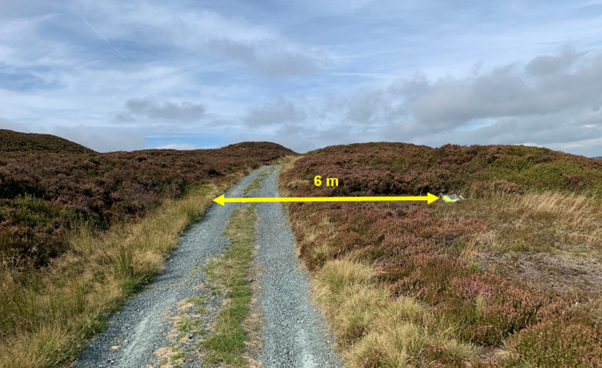
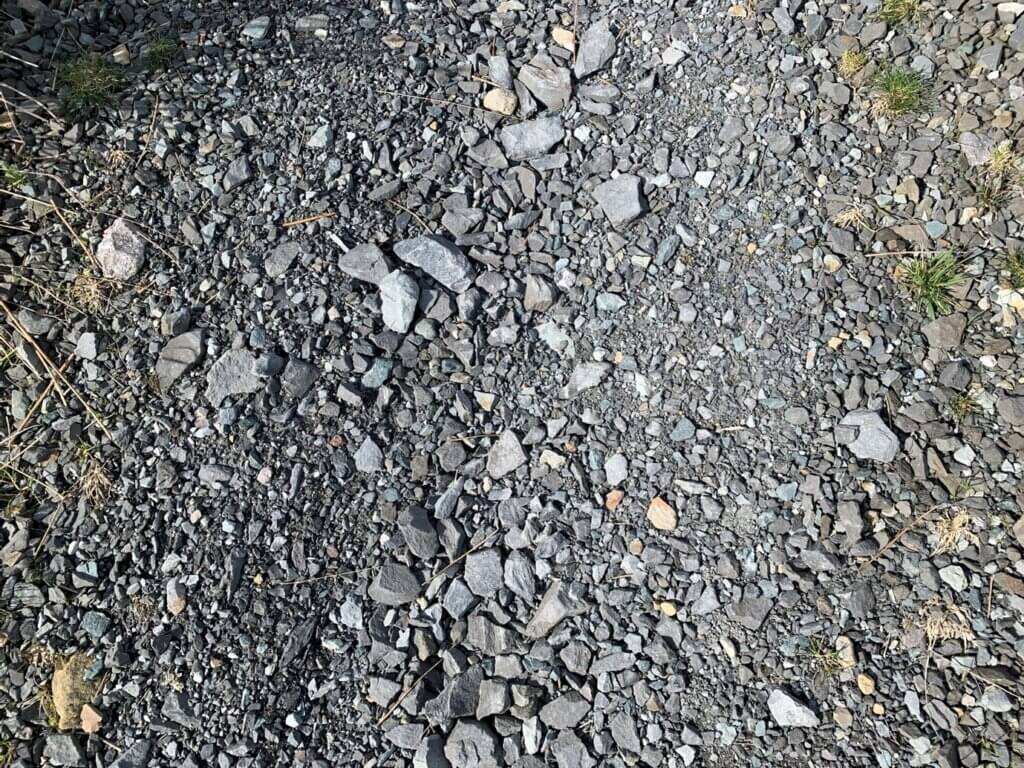
Crow Hill is the terminus of a streak of Keighley Blue, which unlike all the other West Yorkshire sedimentary stone is well-cemented and used as a road stone until it runs out. The BGS notes for Sheet 69 say: “Keighley Bluestone comprises a hard, compact, dark bluish grey, siliceous siltstone, chert, and claystone with abundant spines of the sponge Hyalostelia smithi and Zoophycos traces. Keighley Bluestone is interpreted as being formed from marginal marine, possibly lagoonal, silt.” When this is all over, one of the things I shall most treasure is the way the geology has mattered, but I won’t treasure it as much as the email Calderdale Wind Farm Ltd sent me while I was sitting on Crow Hill.
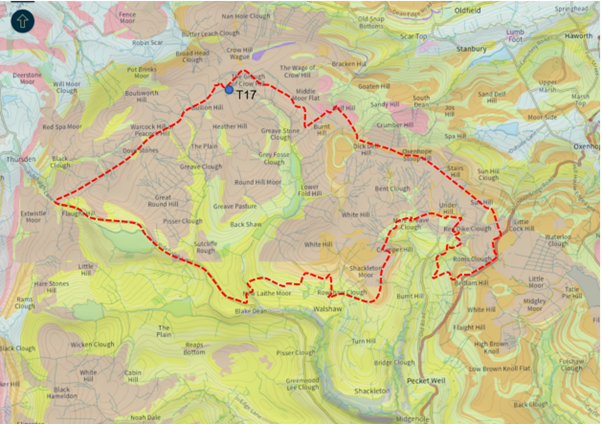

The photograph above shows the flat bed of one of the Crow Hill delphs, a useful example of a ‘borrow pit.’ There is no peat, and the heather grows on the yellow boulder clay with its flat tiles of rock crushed by the glacier. The visible bedrock is Woodhouse Flags and the Keighley Blue has been worked out.
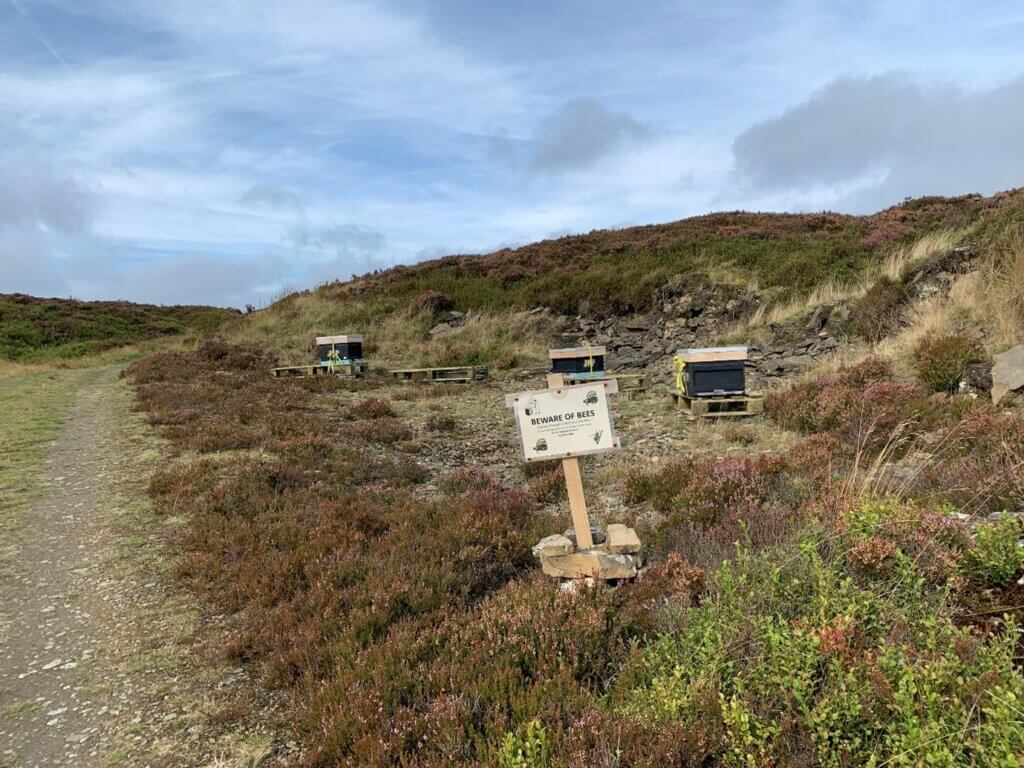
Beyond the last bus stop for the guns, the track deteriorates. We are near the end of the heather season, but three hives are still going; heather is mainly pollinated by wind and bumblebees.
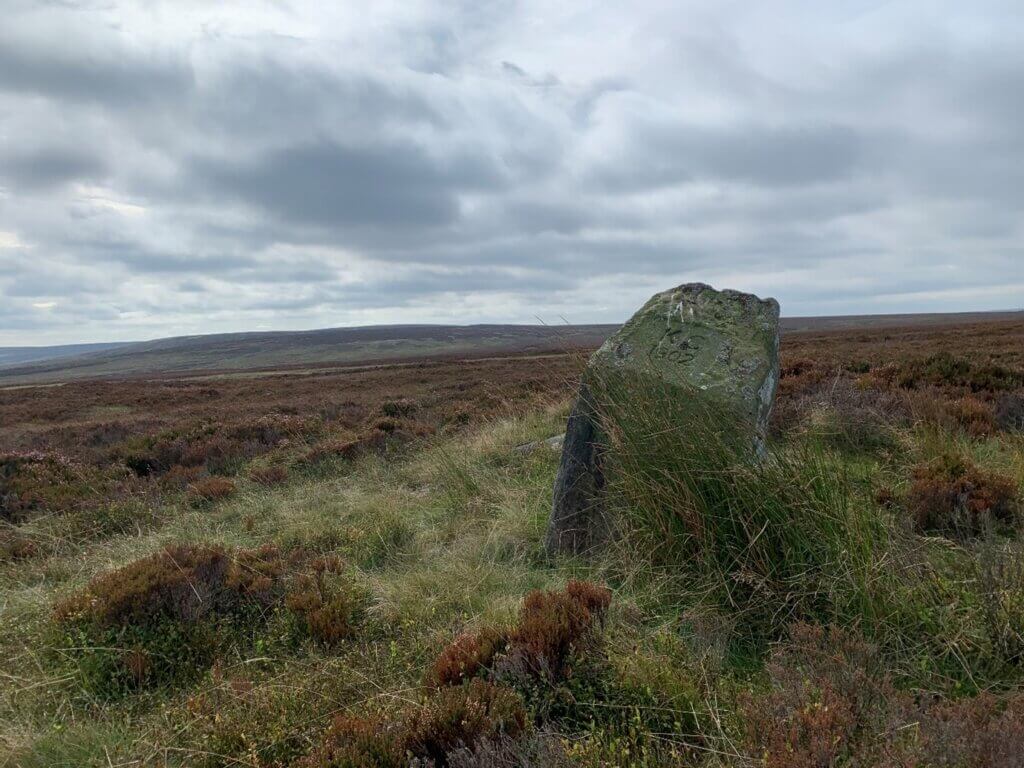
I could leave the path at the large KC 1902 boundary stone and head direct for T17, but a quad-bike scar over bare deep peat on the ridge of Crow Hill is easier. On the shapely summit (well, shapely for round here) which must be responding to the Keighley Blue, I stop to eat a sandwich and watch the only other person in the world walk towards me on the desire path from Boulsworth Hill. Is it Richard Bannister (b. October 1961) coming to tell me (b. October 1962) that I have been made in his likeness and must name all the beasts of the field and fowls of the air? Can I improve on stoat, lapwing, and curlew? Will he fashion me a mate and forbid us to eat the bilberries of the knowledge of good and evil?
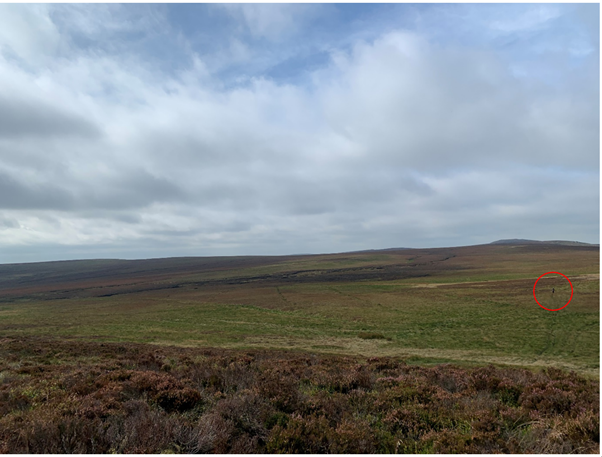
I don’t like my phone, but I have it out for the photograph and notice I have an answer from Calderdale Wind Farm Ltd to some simple questions about electrical connections and geology. I put them to Kevin Whitmore who works for Cavendish Consulting, CWF’s PR firm. I check their website. Yes! Muttley has cracked!
When I refer to Muttley in these blogs, I mean WWRE and their various consultants. Sometimes Muttley is probing the peat; sometimes he is writing about getting useless rock out of borrow pits; sometimes he is signing off new FAQs on the WWRE website, sometimes he is writing unwise emails to me. As in Wacky Races, he is a versatile dog.
WWRE are the investors, but they are not the money. The human face of the money is the Saudi-based Dr Ghazi Mohammed Ahmed Osman, the Director of Calderdale Wind Farm Ltd. What I write today is designed to drive a wedge between Dr Osman and Muttley. The wedge has been supplied by Muttley himself.
The money must never seem foolish, careless, laughably incompetent, or completely hilarious. The money is always and everywhere weak and frightened because it depends, like the Wizard of Oz, on a confidence trick. Walter Bagehot said this about monarchy, but the money knows it too: “Its mystery is its life. We must not let in daylight upon magic.” From today, the longer Dr Osman stays hitched to Muttley, the more foolish, careless, laughably incompetent, or completely hilarious his money will seem, because Muttley has let in a load of daylight.
Walshaw Moor is lovely and dangerous. If you want to see how dangerous it is, look into Widdop sluice during a storm and tell me you are not afraid. We must not allow an organisation dogged by carelessness and laughable muddle to monkey about on Walshaw Moor.
My questions to Kevin Whitmore are below. The electrical set is designed to embarrass Muttley and Dr Osman. CWF is meant to be a 302 MW wind farm, and the scoping report says they have an offer to connect, but Muttley has been accepted to connect only 240 MW by Energy North West, and this fact is published on their paid-for entry in the Embedded Capacity Register. This connection is at Rochdale substation, but until today, a year after the connection was accepted at Rochdale, FAQ 17 on the WWRE website said the connection had been accepted at Padiham.
The geology set are designed to embarrass Muttley about his ignorance of the weakness and porosity of the onsite rock when crushed to aggregate, so that it cannot be used as a roadstone or in concrete; and to embarrass him further about the slapdash mapping of peat depths, obviously so in the far-east of the site. In October I shall begin to check the whole of this survey using a 3-metre avalanche probe bought on eBay for £27.
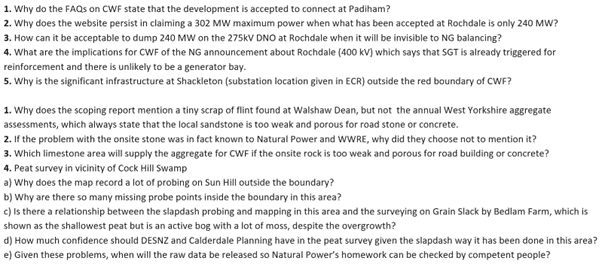
I also sent Kevin the evidence for my questions. This included FAQ17 on the WWRE website and the CWF entry on the embedded capacity register of ENW, showing acceptance to connect of 240 MW at Rochdale, which is 29 km away from the point of connection, given by CWF to the nearest metre, inside a house in Shackleton.

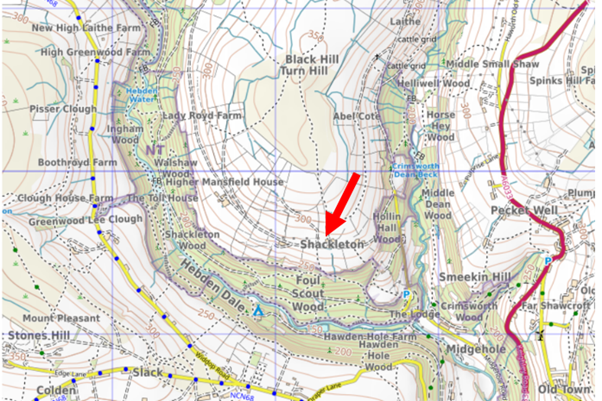
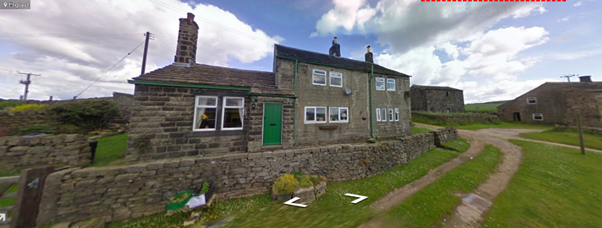
We haven’t talked enough about the implications of the 150 MW battery for the hamlet of Shackleton. An identical one is under construction at the decommissioned Ferrybridge power station in West Yorkshire. There is no better site for a grid-scale asset than a former power station, because all the low resistance national transmission at 400 kV is already there. Muttley is proposing for Shackleton, a hamlet with dirt roads above the National Trust’s Hardcastle Crags, the same grid-scale battery that SSE are building at Ferrybridge but connected with a cable that is more than 9 times less efficient than the NG.



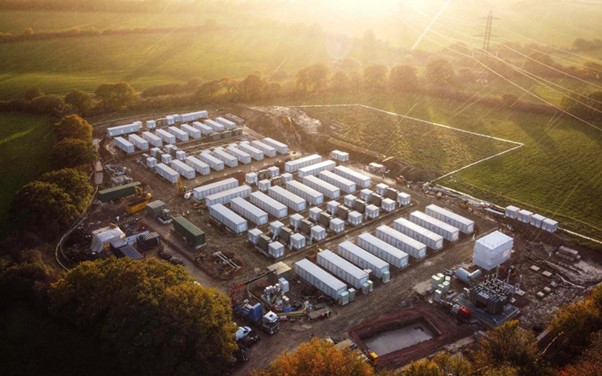
Is Muttley sure about the size of his battery in Shackleton? Do the National Trust still want to “reserve their position” about CWF?

Dr Osman may wonder why there was a crack for my wedge. Had Muttley typed in 302 MW to the embedded capacity register instead of 240 MW, and not published that silly rubbish about Padiham for a year, there would have been no crack. He has failed to maintain a consistent story about his wind farm and now the narrative spins out of control. In fact, he didn’t need to register at all. Following the grid reforms, there is no longer first-come first-served. More agile schemes can jump the queue.
Muttley’s two replies (one personal email and an immediately revised FAQ 17) spread the cracks in all directions and shred his own scoping report. The personal email that I opened on Crow Hill is in PR terms “unwise” and cannot have come from Kevin Whitmore who is a PR expert and may be aghast at what Muttley has handed me. The method I use to drive a wedge between Muttley and Dr Osman is to point out the self-sabotaging behaviour of Muttley, which makes him look ridiculous. Muttley’s hilarious email in answer to some simple questions about electricity and rock makes him look even more ridiculous. Dr Osman, curator of the always fragile money, must decide if the email makes him look ridiculous in front of all the other representatives of the money.

Muttley’s bizarre way of not answering my solidly based questions doesn’t make them go away and they will be put again by someone who cannot be given the hysterical brush-off. This “Stop calling us Muttley” email would have been glorious bounty on its own, but a much more damaging and ludicrous reply to my questions appeared immediately on the WWRE website as the new FAQ 17.

Who signed this off? You are dealing with a well-informed member of the community who has found your entry in the embedded capacity register and pointed out its inconsistency with your website and your scoping report, calling into question the competence of both. In response, you launch two more wind farms, making five altogether. One (312 MW) is perhaps sheer muddle, panic and forgetfulness that Scoping CWF is 302 MW. The other (170 MW at Rochdale) reveals in advance of the planning application the existence of a deep fallback position, indeed the last ditch. All the FAQ had to say was “240 MW at Rochdale” which had already been given away on the Embedded Capacity Register. Rather than launching two new wind farms at 312 MW and 170 MW, Muttley just needed to tell the truth in FAQ 17 about the 240 MW at Rochdale. Why not tell the truth?
Here are the five wind farms that CWF Limited have announced on different bits of Walshaw Moor. Maps of Actual, Last-Ditch A and Last-Ditch B CWFs are given below.
ACME CWF: a 312 MW, 67-turbine wind farm which has an “available” NG connection at an unbuilt substation at an unspecified place and date.
Scoping CWF: a 302 MW, 65-turbine wind farm mapped in the Scoping Report which is not accepted to connect anywhere. The report says that they have an offer to connect with ENW, but that is only for 240 MW, so the scoping report is wrong. At what point does this muddle about connection power and location tip over into a deliberate attempt to mislead? Scoping CWF has 17 dummy turbines ready to be conceded in planning at DESNZ when Scoping CWF becomes…
Actual CWF: a 240 MW, 48-turbine wind farm on deep peat in an SPA that really is “accepted to connect” at faraway Rochdale and whose own substation is at Shackleton. Its layout will be Scoping CWF minus the thirteen turbines on the dangerous ground west of Greave Clough and minus the four Brontë turbines above Wuthering Heights. Muttley’s rookie error of revealing his paid-for position of 240 MW in advance of negotiations must shake Dr Osman’s confidence to the marrow. Has Muttley not perused Donald Trump’s The Art of the Deal? Muddle runs like Japanese knotweed and is already sprouting in Dr Osman’s money. Is Actual CWF meant to be a secret? Does this explain the 170 MW and 312 MW wind farms launched by Muttley in FAQ 17? Lapwings do this to hide their nests.
Padiham CWF: a phantom 0 MW wind farm that had been “accepted to connect” at Padiham from 14 September 2023 until I reminded Muttley it wasn’t, after which it was no longer being pursued.
Last Ditch A CWF: a 170 MW, 34-turbine wind farm connected at Rochdale and announced in seeming panic on 18 September 2024 in the post-Padiham answer to FAQ 17. Model A is Scoping CWF hacked back to east of the reservoirs, and when Emily Brontë is done with it, it will be at most 150 MW. This is the dirtiest CWF of all, a truly terrible wind farm.
Last Ditch B CWF: a 170 MW, 34-turbine wind farm connected at Rochdale and announced in seeming panic on 18 September 2024 in the new answer to FAQ 17. Model B sticks to the shallower peat and mineralised grazing where possible and uses the existing tracks, including crucially the new track that is not on the OS map, but which we all know about, around the top of Thurrish Rough. This section will require some heavy-duty engineering around Mare Greave, and there will be an expensive bridge across the Walshaw Dean divide. Of all the six wind farms listed here, Last Ditch B has by far the lowest carbon intensity because it makes optimum use of the mineralised grazing and existing tracks.
Now, for the benefit of Dr Osman, I shall set out what is ludicrous and incompetent in both the answers published on the WWRE website, bearing in mind that he may have signed them off himself in which case the lights are on at Calderdale Wind Farm Ltd but nobody is at home. Here is the original FAQ 17 again.

CWF Ltd had no intention to mislead. “We already have an offer … to connect at Padiham” was wishful thinking that somehow got baked into humiliating error and published on their website for a year without anyone at WWRE noticing until I told them. Whoever signed this off did not understand anything about electricity transmission, so it was hardly surprising they thought Padiham was a suburb of Rochdale. The voltage of the NG is given as 440 KV but it is 400 kV. A lot of people think the NG is 440 kV, but only one of them is building a wind farm, and his name is Muttley. The more ludicrous error is “KV” which is Kelvin Volts, a unit that nobody had found a use for until Muttley decided that 440 Kelvin Volts would do for the potential difference of the National Grid. The rumour that Kelvin Volts may be a former lover of Stormy Daniels can neither be confirmed nor denied.

This new FAQ was obviously written in a panic, and it may not be up long. It illustrates in a compact way the hallmark muddle of WWRE. Either 312 MW is a typo and Muttley meant 302 MW, which is famously the power of the wind farm described in his own Scoping Report, or Muttley has let slip a plan for an even more powerful ACME CWF with 67 turbines. You decide. Dr Osman will make his own mind up.
Muttley cannot claim “up to 170 MW at Rochdale” is also a typo because the correct figure, that Muttley paid for, is 240 MW at Rochdale – it is on the ECR and he typed 240 into the spreadsheet in four different places, I sent him a copy of his own entry with my emails and 170 is not a typo for 240. I think Muttley’s thought process went like this; “Gosh! 240 MW at Rochdale DNO is what we think we can get past Ed Miliband, but it’s meant to be a secret, so we can ‘reluctantly’ concede 17 turbines and crack on. I’d better give the little people 170 MW to cover my tracks.” This state of mind is like Basil Fawlty’s in “The Germans”. “Whatever you do, don’t mention 240 MW. I mentioned it once, but I think I got away with it.”
We now know that Muttley has a Last Ditch 170 MW CWF plan and that he is so sensitive and evasive about the 240 MW reality that he himself typed into the Embedded Capacity Register, and paid for, that he would rather reveal Muttley’s Last Stand on 170 MW. From an organisation that is famous for candour, that is a hell of a lot of information to divulge in one FAQ. Dr Osman can hold his own inquest into this 312, 302, 240, 170, 0 at Padiham shambles. I am only telling him what people might think about the competence of the money when his man Muttley blurts out two completely unexpected megawattages in a panicked response to some simple questions from nobody much. Now let’s pay attention to the other information divulged while trying to ignore the dazzling new megawattages.
“There are currently two options available to Calderdale Wind Farm to connect to the Grid. One is for the project to connect via Electricity North West at Rochdale sub-station (for up to 170 MW) and the other is a direct connection by National Grid (for up to 312 MW)”.
Note the confusion in Muttley’s mind about “the Grid.” Only one of the two options is “the Grid.” The offer at Rochdale is connection into the DNO at 275 kV. The DNO is who you ring up if you have a power cut. You don’t ring the National Grid when your toaster is on the blink. The Distribution Network Operator handles the delivery of electricity within its locality, in this case NW England (west of the Pennines). The DNO voltage is only 275 kV because the electricity isn’t going far. Power loss is inversely proportional to the square of the voltage so 275 kV losses are 2.1 times greater than 400 kV. Dr Osman’s 240 MW will also be invisible to the National Grid control centre at Wokingham, and not part of the balancing system involving the interconnectors, nuclear base load, and pumped storage at Cruachan and Ffestiniog. All the much smaller wind farms in Calderdale are connected to the National Grid so their power can be balanced and moved in bulk nationwide. CWF is accepted to connect 240 MW to the DNO for local use only.
Nobody, including Muttley himself, can be sure what Muttley, or perhaps Dr Osman, means by “direct connection by National Grid.” If he meant the National Grid are going to string 400 kV pylons from Rochdale to the cottage at Shackleton to collect his intermittent 312 MW, then every other generator in Britain would be asking why they aren’t given this Platinum service.
I don’t believe for a second that somebody who yesterday thought the National Grid ran on 440 Kelvin Volts has today secured a direct connection by the National Grid at a farmhouse in Shackleton. Muttley doesn’t mean “by the National Grid”. He means “to the National Grid”.
What Muttley hopes is that his expensive but serviceable 132 kV buried cables coming out of his substation and colossal battery at Shackleton might one day be connected to a National Grid substation. As he was saying only yesterday, this would require NG to build a new substation within economic range of Calderdale Wind Farm, and Muttley does not know where that would be or when it would be built and neither does the National Grid. A defensible estimate would be “Somewhere within 20 km at some time after 2038 if you ever get planning.” An equally defensible estimate would be “Never” because the NG has £58 billion of upgrades to achieve, and Richard Bannister’s desire to sell a bit of remote grouse moor is not really on their radar. It is not the job of the National Grid to mop up incontinent wind farms built willy-nilly because the grouse are moody (or as Deep Stoat put it, “The new manager has lost the dressing room!”) and Ed Miliband has been played by a developer who thought the National Grid runs at 440 Kelvin Volts. So, in the sentence “There are currently two options available to Calderdale Wind Farm to connect to the Grid,” the word “available” means two very different things. Suppose I am at Shackleton and I want to drive to Rochdale. I have two “available” options. One is my knackered Freelander parked at Clough Foot with MoT, insurance, and the keys. The other is the E-type Jag I ogled at a filling station in Harrogate a fortnight ago. They are both “available”. I will leave it to Dr Osman to decide whether Muttley’s use of the word “available” leaves him open to justified mockery from other people who represent the money. This “available option” might as well be “direct connection by the National Grid to their substation in Narnia.” Competence matters. Calderdale Wind Farm Ltd want to put hard infrastructure in a notorious catchment, and they can’t get a FAQ straight.
Here is my model of Actual 240 MW 48-turbine CWF, the one Muttley would rather we didn’t mention, even though “240 MW at Rochdale sent from a farmhouse in Shackleton” is among the few stone-cold facts he has published about any of his five over-lapping wind farms projected for various bits of Walshaw Moor.

Actual 240 MW CWF is really the Heather Hill massif (between Greave Clough and Walshaw Dean) plus a bridge and a very long access road to Ovenden Moor with benefits, all connected to faraway Rochdale via a farmhouse in Shackleton and a monster battery. Muttley could reduce the CO2 emissions a lot by cutting out the spine road with benefits, but then he couldn’t get the turbine blades to Heather Hill.
The published layout of Scoping CWF has 65 turbines, so we now know that at least 17 of them are dummies. These dummies have been inserted so they can be conceded at the right moment, without in fact conceding or costing anything at all. It is easy to spot 13 of these dummies. West of Greave Clough the terrain is much more difficult, with very deep peat, charismatic features (Scout Ridge T1 and Dove Stones T58) and extensive fast drainage into Greave Clough that can overwhelm the sluice into Widdop reservoir (T4 Pisser Clough, T14 Foul Syke, T10 Field of the Mosses, T16 The Sod: the clue is in the names) and hit Hebden Bridge and Mytholmroyd directly. The 13 turbines west of Greave Clough are dummies.
The withdrawal of CWF west of Greave Clough is implicit in the Embedded Capacity Register entry, and this defunct and dangerous section of Scoping CWF, should be explicitly withdrawn, now, so that those of us who are going to model the increased flood peak don’t have to include the bit that nobody wants to build anyway. This doesn’t make CWF safe, but it would show that CWF Ltd had learned something from the grim culture of recklessness that we have seen repeatedly elsewhere in the last fifty years. I say to Muttley, “Look into Widdop sluice after a named storm and tell me you are not afraid of your own wind farm.” Since 240 MW is all they want anyway, the turbines west of Greave Clough should not appear in any further plans submitted by Calderdale Wind Farm Ltd.
The scoping report fails to acknowledge the well-known weakness of the onsite aggregate and fails to state that the acceptance to connect at Rochdale is for a much smaller wind farm. Both failures are crucial to the purpose of the scoping report, which is to guide the modelling of environmental impact. Explanations should be given to the consulted bodies and Calderdale Council for these two very significant failures of candour or ignorance and the scoping report should be withdrawn.
Three or four more dummy turbines are on the Brontë skyline above Top Withens (T44, T46) and one or two depend for access on them, maybe T41, and certainly T62 Burnt Hill Flat, down a 10% slope from T46 Alcomden Stones. They have caused national and international outrage, which was their purpose, and they will be withdrawn. Since I first drew this kind of map, I have wondered how to get to T62 without building a road that acts as a contour-crossing drainage channel. It’s a dummy! I visited it with the dog in this same wonderful spell of weather: its blog will appear soon and T62 may never be mentioned again.
Calderdale Council will reject any wind farm on Walshaw Moor on the straightforward grounds that it is wholly inside an SPA, would shatter the SPA and undermine British habitat law, and would open the Council to enormous public liability claims in the event of a flood in the Calder Valley. The point at which the dummies are conceded is when CWF is called in by DESNZ. The dummies might give Ed Miliband enough cover to overturn an SPA, a cornerstone of British habitat law, while pretending that hard negotiation has produced a 240 MW wind farm that is less dangerous and less damaging to nature than the dreadful 302 MW one.
Developers and regulators play this 302/240 scam all the time. A planning application might be for 1000 downsizer houses, when the developers want 600 family homes. What these expert developers don’t do ahead of negotiations is offer a Section-75 playground and primary school for the downsizers. No wonder Muttley doesn’t want 240 MW on his website, but he did 240 type it into the ECR four times and sent ENW a cheque.
This cynical 302/240 ploy remains the main threat, but it doesn’t work if you inadvertently admit the trick in advance by registering a 240 MW wind farm, does it Mr Miliband?
Now we look at two models of the 170 MW CWF announced in FAQ 17. The obvious one is terrible.
“Last Ditch A 170 MW CWF” is the 33 turbines east of the reservoirs. This version will of course emit less total CO2 from the peat disturbed in construction and in the drying downhill of the infrastructure than the 302 MW 65-turbine CWF of the scoping report and peat survey. But it will be generating much less electricity, so the carbon intensity per MW will increase a lot, because carbon intensive overheads, like the access across Oxenhope Moor and the very long connection to Rochdale, are no longer divided by 302 MW, but by 170 MW or less and the low carbon mineralised grazing west of the reservoirs has been given up.
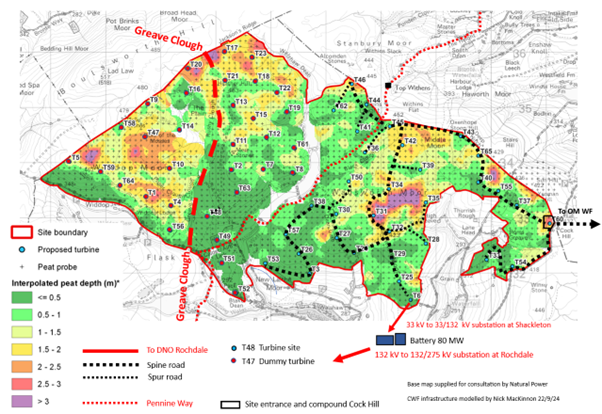
“Last Ditch A 170 MW CWF” is a truly terrible wind farm and by the time Emily Brontë is done, it will be an even more expensive and carbon-intensive 150 MW. There are, very sadly, much dirtier wind farms in Scotland, on deep peat, which also involved the uprooting of Sitka spruce that we had paid for. Surely no English wind farm will get near the worst Scottish ones for carbon emissions? Surely, we have learned our lesson about wind farms on peat.
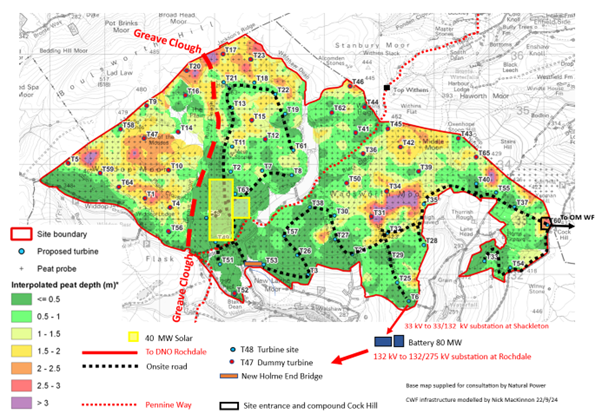
Last Ditch B 170 MW CWF is the nearest thing to a plausible wind farm among the five powers (312, 302, 240, 170, 0) announced by Muttley so far. We would have to do the peat emission calculation with the raw data from the peat survey because it is likely that the grazing in the south end has little, if any peat. The relative weights of the arguments against CWF are different for Last Ditch B. More weight falls on the self-exhibited muddle of WWRE, the expense and disruption of offsite limestone, the expense of the connection to Rochdale and the difficulty of a 34.1% capacity target with a wind farm in the shadow of higher ground. The question for Ed Miliband will be “Is it worth my wearing the albatross cravat by destroying the SPA habitat laws for a 170 MW wind farm that will be expensive for billpayers and grindingly slow to build because of the imported limestone, and not that windy, especially once I trim it to 120 MW to show my power and love of nature?”
Bad lumbering projects consume resources that should be used by good agile ones. Mr Miliband will have approved plenty of quick, cheap, legal schemes before CWF get their portfolio of wind farms in front of him.
Muttley and Dr Osman think Ed Miliband is “the mark” at the poker table, the player whose inexperience and exuberance can be exploited, but by revealing their 240 MW and 170 MW cards before the flop, Dr Osman and Muttley are the marks.
Coming off Crow Hill, I cut the corner to T17, get bogged down, and eventually head in desperation for a small tree, the tallest thing in a mile, planted on the boundary as a living stake. Progress slows across High Black Dike.
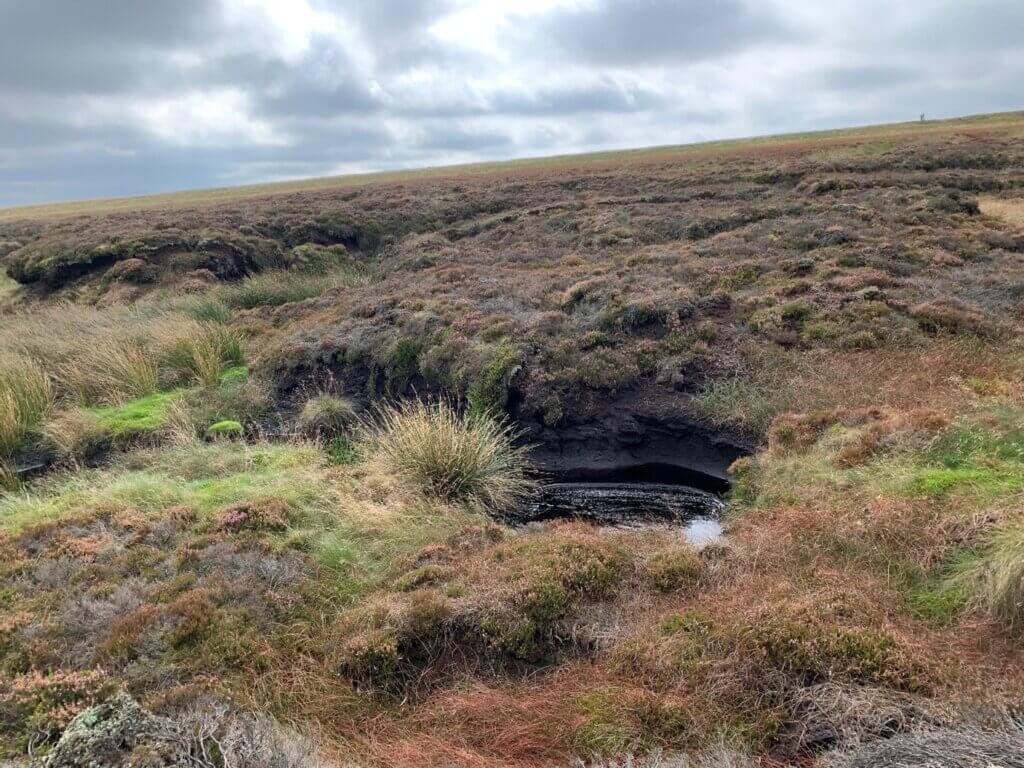
Once on Heather Hill the walking is much easier. I can see the Wind Farm Archipelago from here: Ovenden Moor, Scout Moor and Crook Hill. I decide to return along the boundary markers, and this goes quite well until it doesn’t. At least I find one of the stones. Does anyone know what it means?

The municipal boundary now enters the margins of the dreaded Stanbury Bog which is so unstable that the CWF red line scarpers into Bofts Hole. There is no desire path over Stanbury Bog. My father-in-law used to come up here as a child in the 1930s and jump on the peat with his friends so they could feel the vibrations like a waterbed, though it was late in the swinging sixties before “like a waterbed” become an effective simile in Hebden Bridge, let alone Stanbury. Even the intrepid Chris Goddard leaves this “peaty wilderness” blank in his guidebook. I need to get back to Crow Hill but in the way is a strip of contorted ground called Scotchman’s Arm.
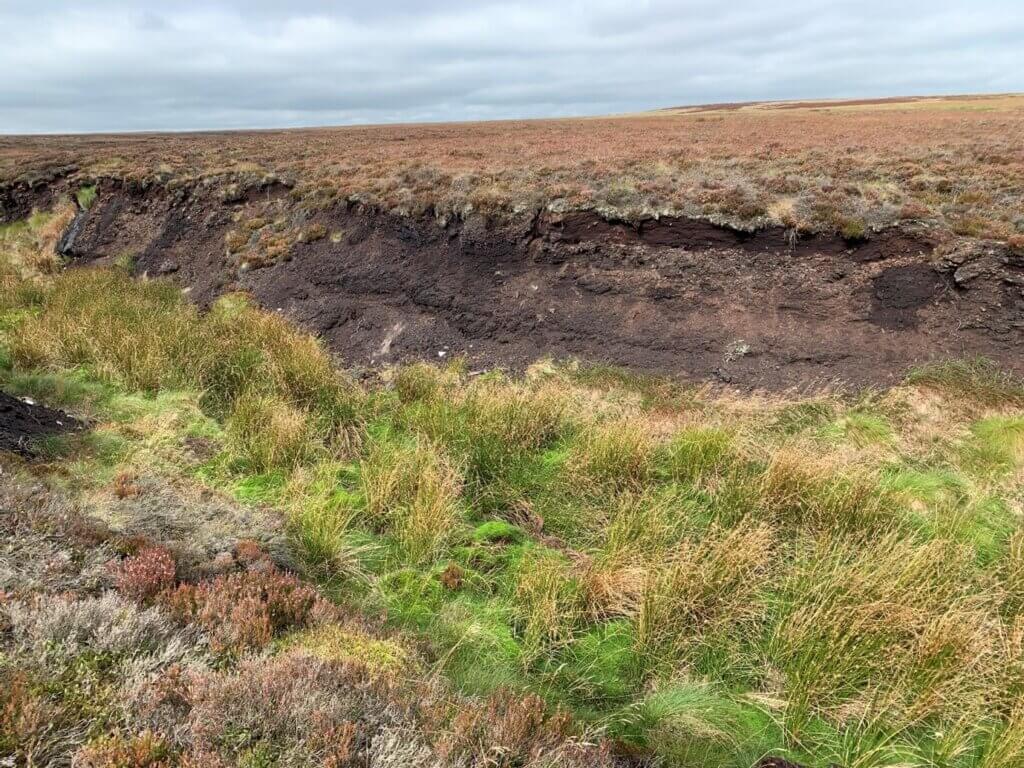
I funk the chance to leap a fissure in the peat and it opens into a canyon at least five metres deep with vertical walls. I keep working right and eventually cross the suction of a nasty soakaway at the canyon’s end before struggling up across the heather hags to Crow Hill and the blue track home.

It is autumn 2024. Muttley hadn’t mastered the voltage of the National Grid by yesterday, and he doesn’t know the power of his own wind farm even to one significant figure. His scoping report is meant to identify potential environmental damage, but from which wind farm? The little that was relevant in the absurdly large Scoping Report has been shredded by CWF’s own revelations, yet one of the “significant likely effects of the project” wasn’t even mentioned by Muttley: the onsite aggregate is too weak and porous for roadstone or concrete, so the onsite borrow pits cannot supply most of the rock needed and limestone will have to be imported from distance through the densely packed valleys. This fact is easily available to the most junior Muttley. It appears in the notes to Sheet 69 Bradford BGS map, and has been described with full implications for climate, transport and industry every year in the West Yorkshire Aggregate Assessments since 2012. If you are looking forward to the 2024 edition, it comes out in December, just in time for Christmas. I shall be sending a copy to Dr Osman in Blyth but do send one to Muttley in Glasgow.
If Calderdale Wind Farm Ltd want to force me to stop calling their representatives Muttley, they will have to explain to West Yorkshire Police why their 900,000 tonnes of weak and porous onsite aggregate driven through Keighley, the West Yorkshire Aggregate Assessments, the Padiham Connection, 312, 302, 240, 170 MW, and the unbuilt 440 Kelvin Volt substation ‘available’ in Narnia don’t make them resemble a cartoon dog that constantly undermines the boss. I shall have invited Chief Constable John Robins to find one hundred errors in the peat depth map in just two minutes and may take him to look into Widdop sluice after a winter storm and ask him if he is not afraid of Muttley and his bulldozer.
They don’t like it, but this dog’s breakfast of five wind farms made of soft aggregate earns them the M-word. If he worked for me, M*ttley would be beyond final written warning by now, but perhaps Dr Osman, like Dick Dastardly, enjoys self-inflicted cartoon damage. If so, he is unique among the hundreds of representatives of “the money” I have known in my profession.
Every penny spent on the scoping report for a dangerous 302 MW (or is it 312 MW?) wind farm has been wasted, and much of it has been so damaging to Dr Osman’s money that he might as well have sent the lolly straight to the RSPB. CWF Ltd spent £970,817 on consultants and £314,699 on surveys in 2022 and 2023. For my total of £1,285,516, I would have expected someone at Natural Power to check out the suitability of the onsite rock by looking at BGS Sheet 69 and reading the notes, and checking the West Yorkshire annual aggregate assessments, and to have looked at the peat survey map and asked some questions about the probed points represented on it, and to have known that 40 cm is where deep peat starts. I’d have expected a single announced megawattage and for the point of connection to be consistent across my public outlets. I would have expected the bird work to count for one of the years of a planning survey. If you want to know the strength of the SPA that Mr Miliband must set aside without losing the inevitable judicial review, read the RSPB’s letter in response to the scoping report.
If I were Dr Osman, I would be asking Muttley, “Why are we spending money on surveys when we don’t know how big our wind farm is even to one significant figure?” “Why did we release a scoping report that we have shredded with our own announcements?” “Does my battery look big in this?”
How many more blunders before Muttley is dismissed and sued by his embarrassed client? I haven’t even started on the peat depth map, where the glaring errors are easy to spot, but not for Muttley. Why is it so blatantly slapdash? How can we let Muttley dig vast holes and gashes in famously dangerous ground and fill them with concrete and imported limestone when he can’t even poke a stick into it consistently?
If Dr Osman wants to sue Muttley (Padiham, Rochdale, Narnia, BGS 69, limestone, 312, 302, 240, 170, 440 Kelvin Volts, hundred-error peat map, panic on 18 September 2024, “available”, spilling the beans on the Actual 240 MW CWF, a self-shredded scoping report that cost over £1 million) I repeat my offer to appear as an expert witness for the plaintiffs at my usual rate.
Why the muddled and now panicked rush? One answer is that the only chance this expensive, destructive, polluting wind farm of unknown size has of being built is if it is in the earliest wave of applications called in by DESNZ. People tell me Ed Miliband can spot a wrong ’un. We cannot take that chance with the birds on the SPA, the Bronze Age sequestered carbon, the billpayers’ money, and the deadly flooding, and that is why we walk to the turbine sites and write about them here.
++++++++++++++++++++++++++++++++++++++++++++++++++++++++
This is the 19th in a series of 65 guest blogs on each of the wind turbines which Richard Bannister plans to have erected on Walshaw Moor. Turbines 5, 6, 9, 11, 25, 27, 32, 33, 34, 35, 40, 43, 44, 47, 54, 56, 58 and 64 have already been described. To see all the blogs – click here.
[registration_form]
Just a brilliant bit of work, Nick!
Thank you, Nick, for such an interesting read; I’m glad of the detailed information and elucidation of the issues.